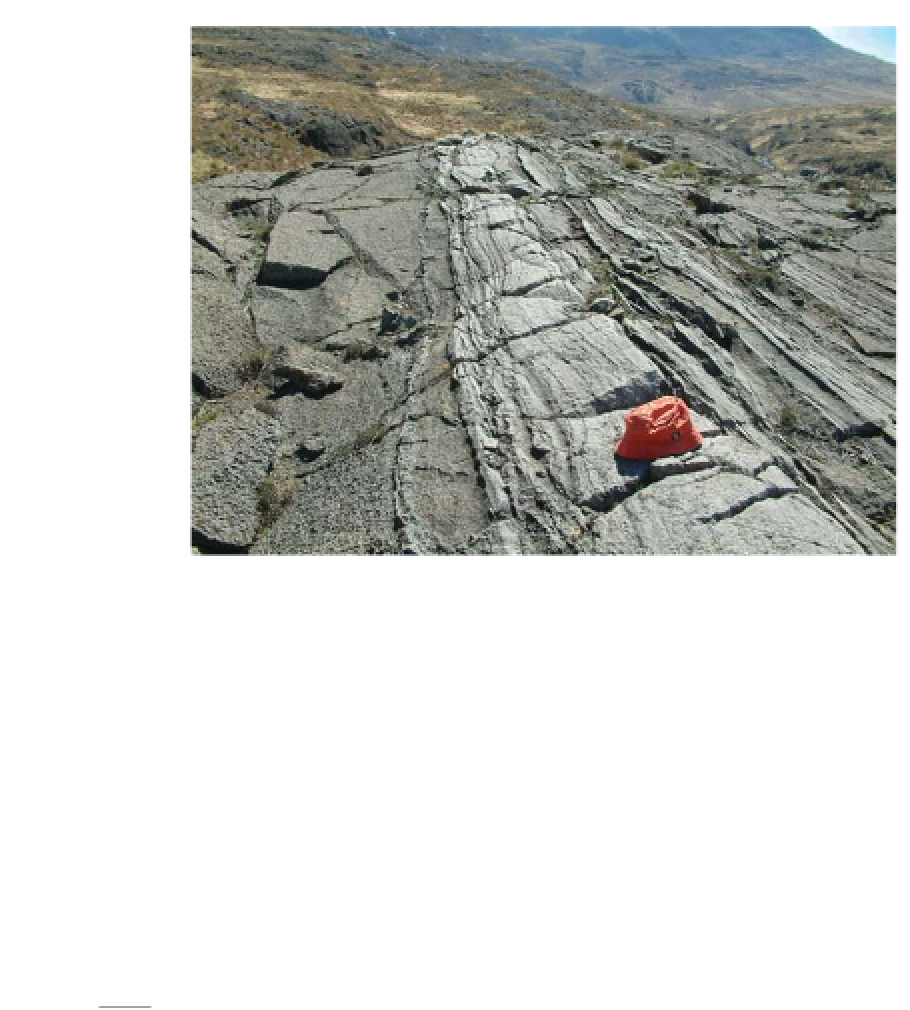Geology Reference
In-Depth Information
Figure 2.11
Igneous layering between darker and lighter bands in the Rum
layered intrusion, Scotland.
gabbros) and also occasionally in diorite and granite intrusions. It takes the
form of alternating and repeated layers of crystals organised into different modal
concentrations, typically varying from mafic rich (dark layers) to felsic rich (light
layers) (for example, Figure 2.11). This igneous layering/lamination is repeated
many times and can occur on a variety of scales through an intrusion, and is
typically found in the larger igneous centres and thick sill sequences, where the
injecting magma is a mixture of crystals and liquid. This process of large-scale
fractional crystallisation
may result in an apparently stratified magma chamber
in closed systems (one magma batch) in which there is a complete gradation from
the most mafic rocks (that is, mainly ferromagnesian minerals) at the base to the
most felsic rocks (that is, mainly feldspars with relatively few ferromagnesian
minerals) at the top. In open systems where repeated magma batches replenish
the system, large scale repeated layered sequences can occur.
The origin of the igneous layering has been the subject of much debate over
the years. Clearly, many examples of layers that are formed by gravity driven
processes occur, with either crystals settling out of a cooling magma body or
crystal laden slurries collapsing in from the sides and roof of a magma body
where crystallisation is enhanced. Both of these examples will result in the
preferential sorting of different density minerals into the layers. Structures such
















